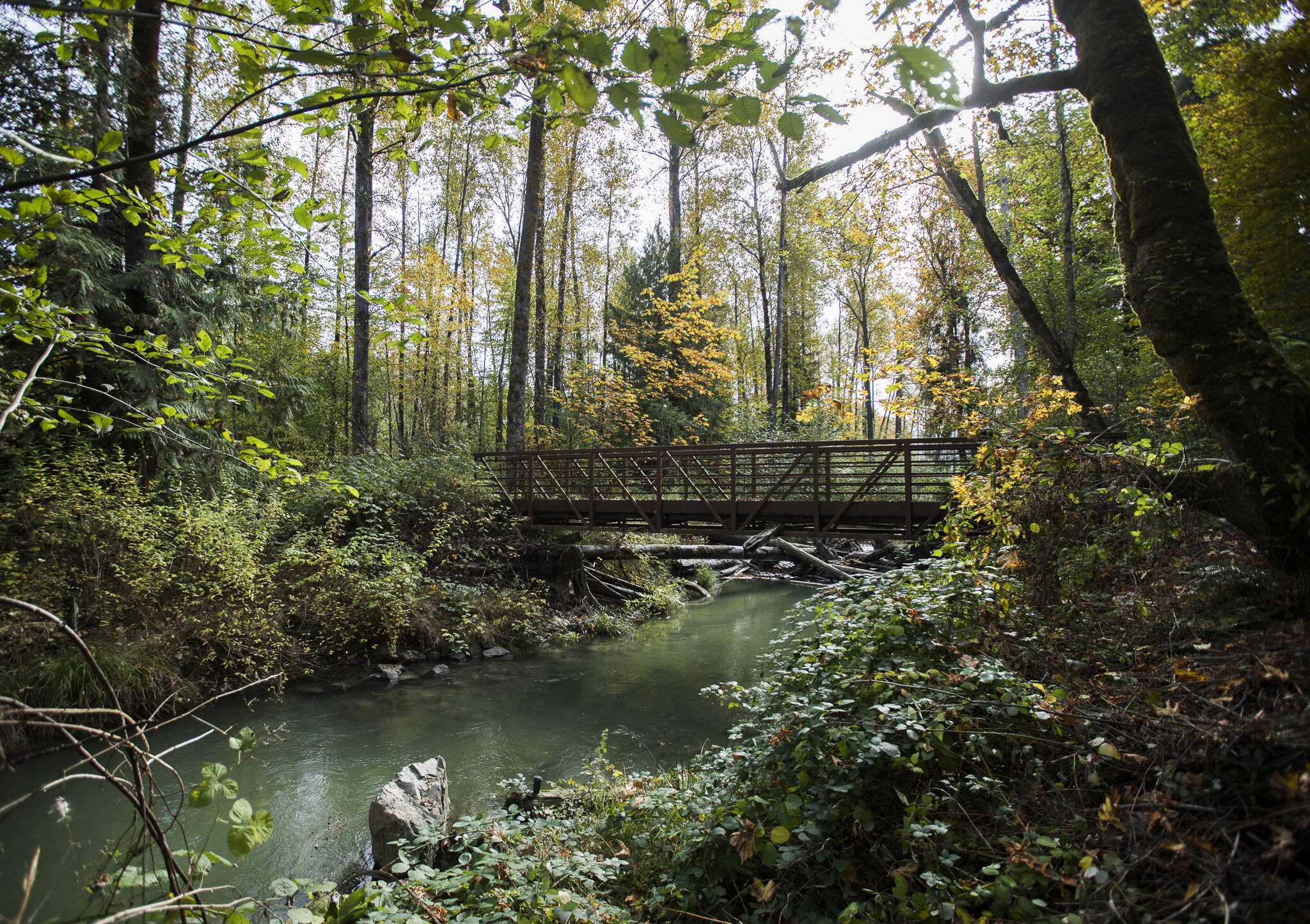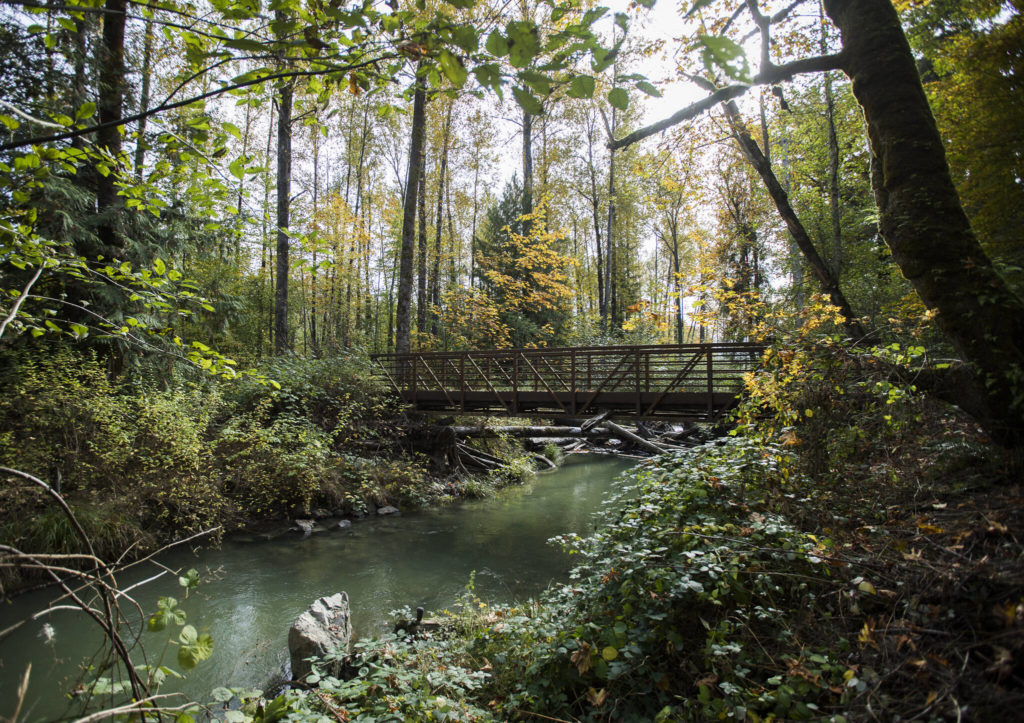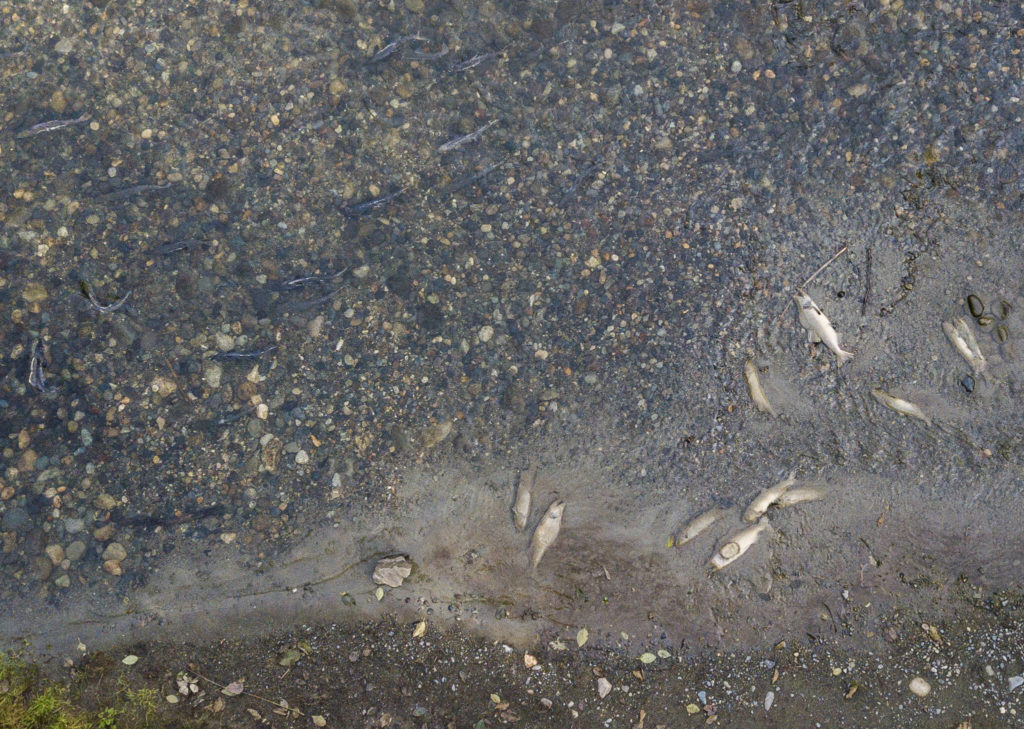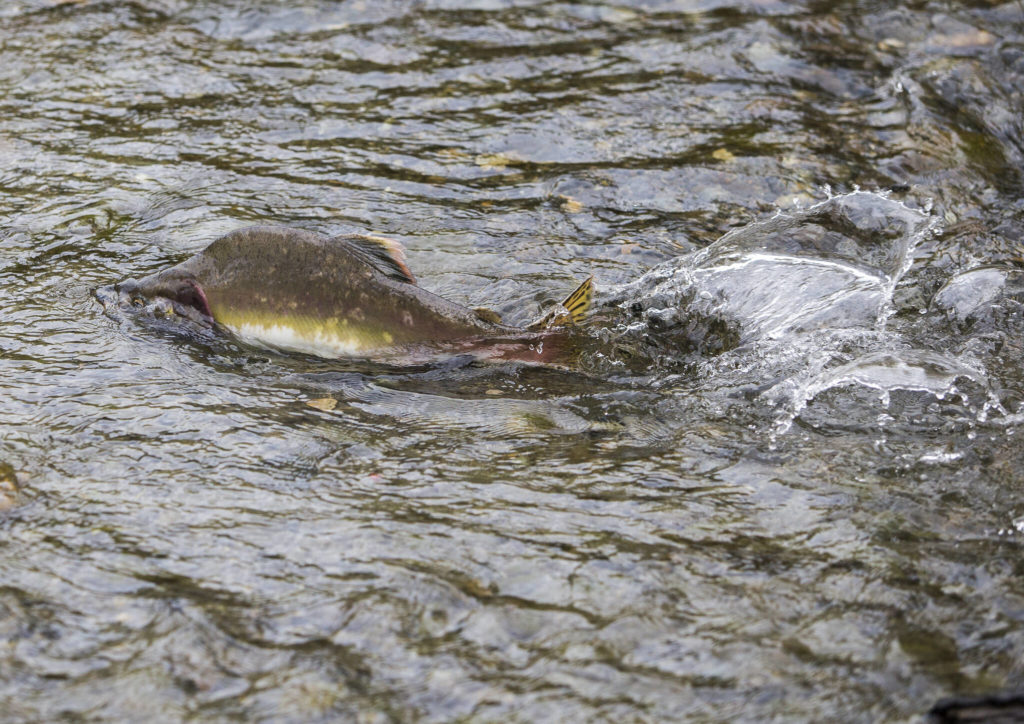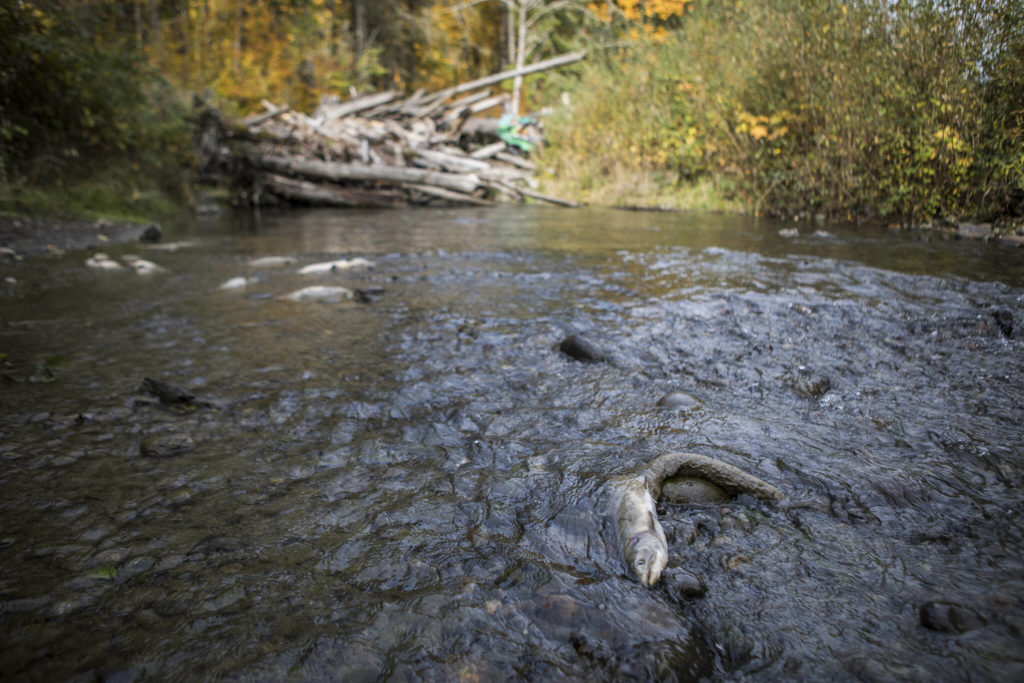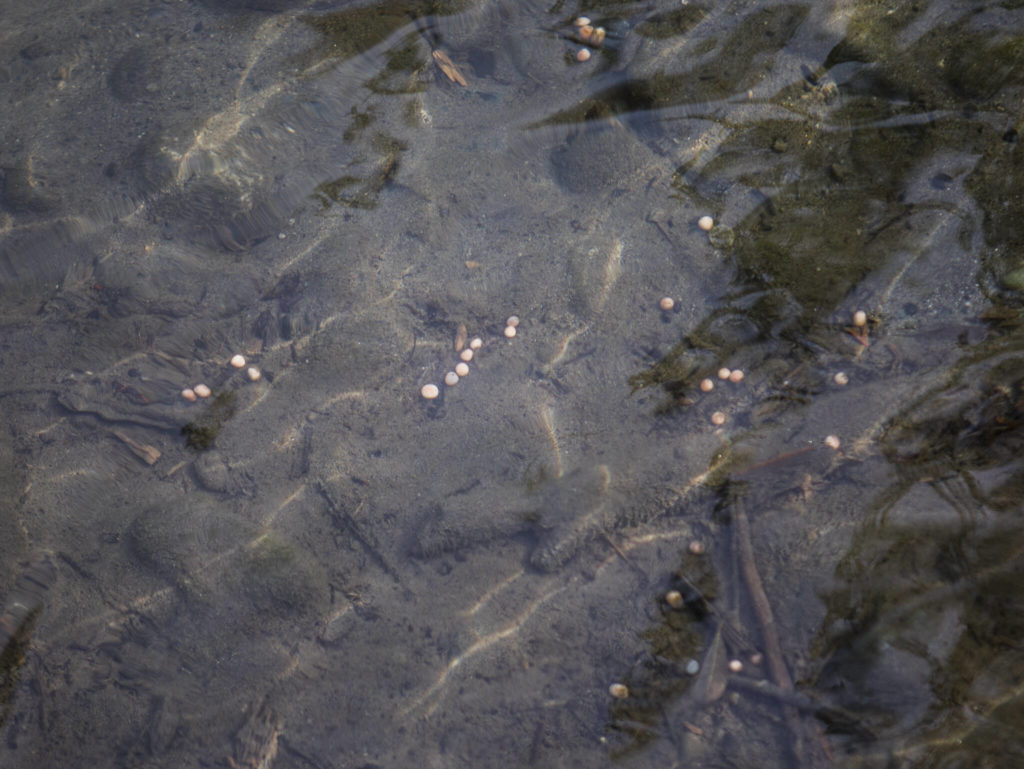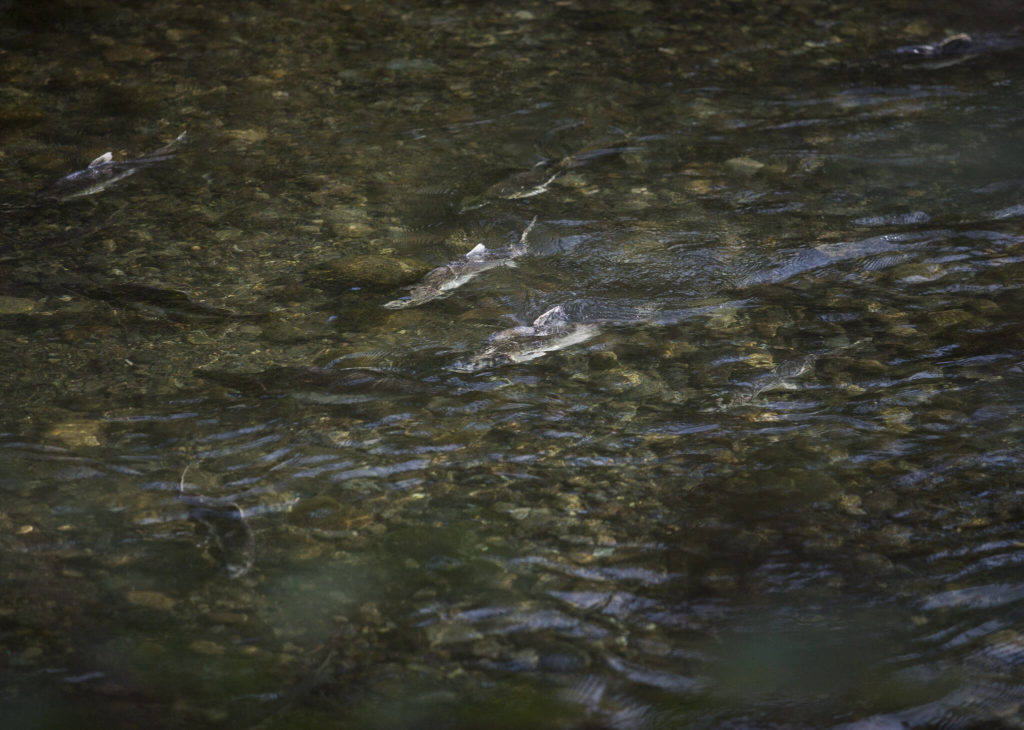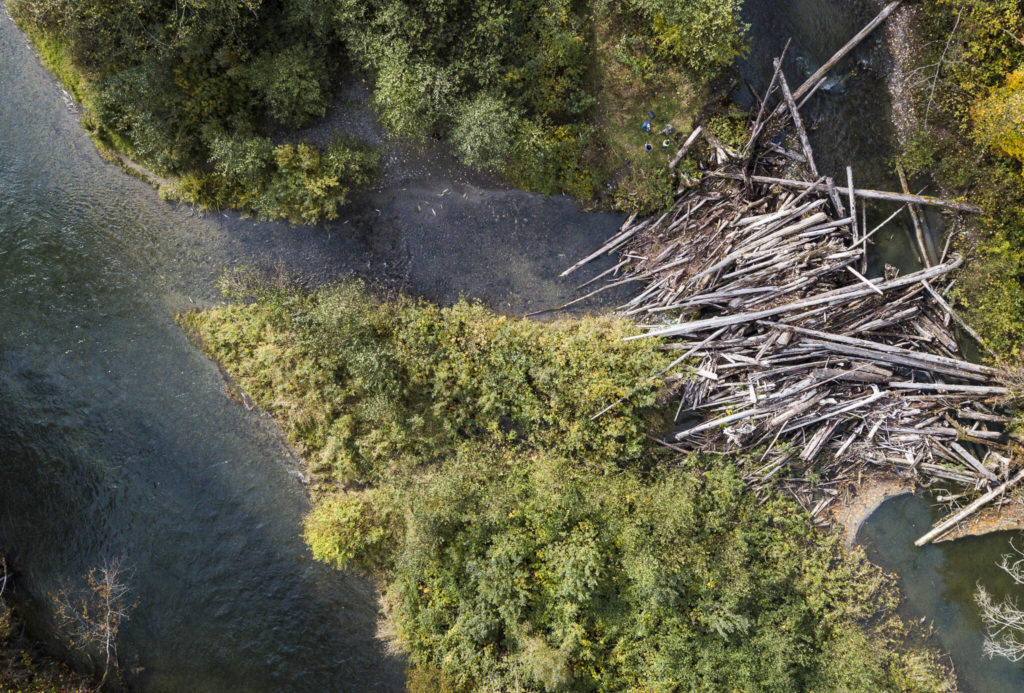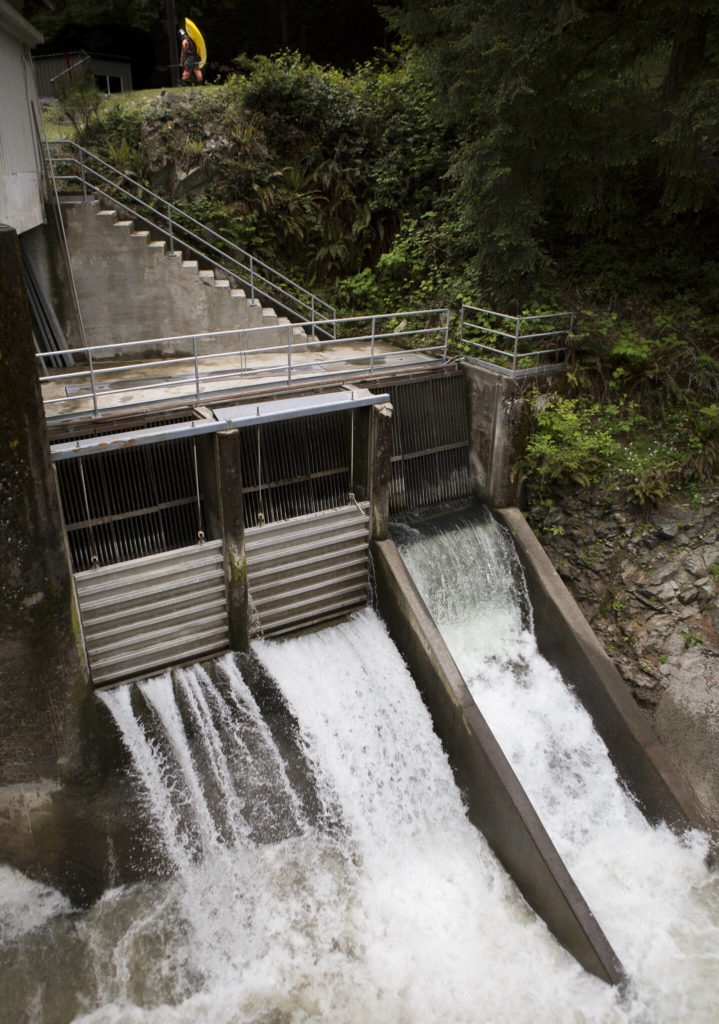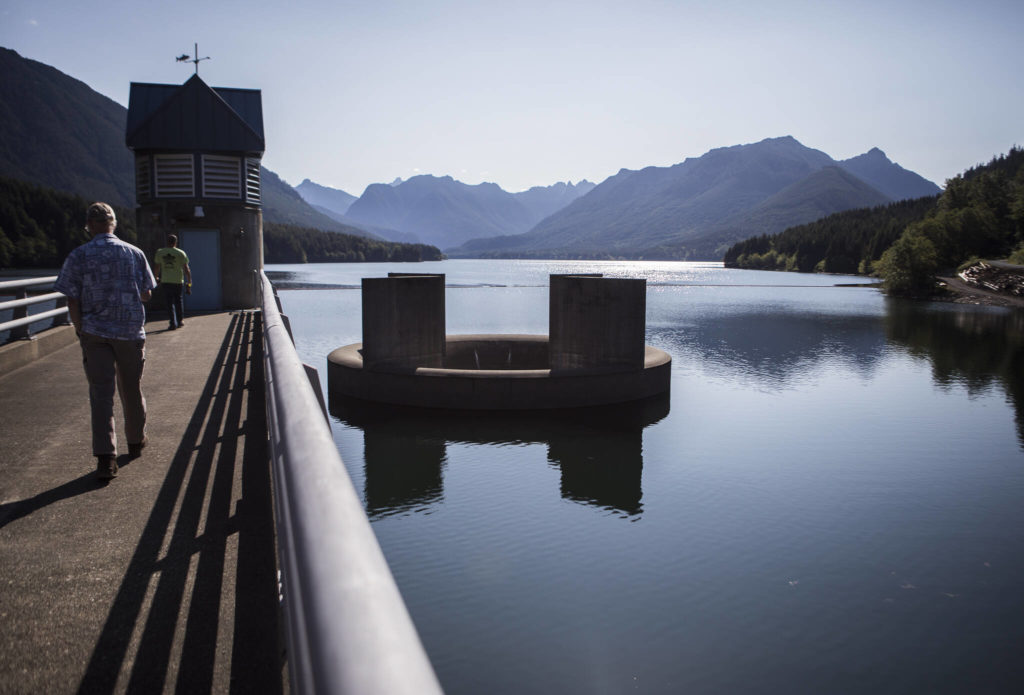SULTAN — On a recent October morning, pink salmon splashed in a shallow side channel alongside the Sultan River, their trademark humps protruding out of the water. Some moved slower, gray from decay, having laid eggs in the gravel. Others, at the end of their cycle, piled up on the shore as corpses.
Ten years ago, this spot at Rudolph Reese Park was damp dirt. There was no channel, no logjam, no salmon. It all was still an idea in a document.
When the Snohomish County PUD renewed its license in 2011 with the Federal Energy Regulatory Commission for the Henry M. Jackson Hydroelectric Project, the agency reshaped how it would manage the Sultan River for the next 45 years.
Leading up to the license renewal, stakeholder meetings brought to the table a range of parties: federal agencies, the cities of Sultan and Everett, the Tulalip Tribes and American Whitewater, to name a few. Environmental groups like the Alpine Lakes Protection Society, North Cascades Conservation Council and Pilchuck Audubon Society also had their say.
Spada Lake, with a capacity of 50 billion gallons, is a liquid balancing act. The reservoir supplies water to over three-quarters of Snohomish County residents; to produce enough hydropower to electrify more than 53,000 homes; to give kayakers new chances to battle whitewater; and to help salmon thrive.
The Culmback Dam, where the hydropower project is located, was built in 1965 and raised in 1984. Now at 640 feet long and 262 feet high, it hasn’t seen the same drama as other dams. There’s no concerted effort to tear it down. Keith Binkley, a fish biologist and the PUD’s natural resources manager, isn’t sure a free-flowing Sultan River would be better for salmon. Looking at historical flow data, he said, the river experienced extreme flooding events before the dam was built. Canyon walls would pinch the waterway, acting as a firehose, potentially wiping out spawning grounds.
“It rains like cats and dogs up here,” Binkley said. “… It’s pretty safe to say that the Sultan would not have been a rock-solid salmon producer. It would’ve been hit and miss, here and there.”
Still, before 2011, the PUD had never prioritized salmon on the Sultan the way it does now.
In the past decade, the PUD has:
• Restored and enhanced 2 miles of side channel habitat in the lower Sultan River, including at Reese and Osprey parks.
• Built eight engineered logjams for fish-rearing habitat.
• Created new fish passages, one through a natural landslide, the other through a diversion dam.
• Installed a new tunnel and pipe at Culmback Dam to help adjust water temperatures for fish downstream.
• Expanded fish monitoring, including new smolt traps.
The PUD also has opened pedestrian access to Culmback Dam and improved access to the river and lakes, including the new 1-mile-long Sultan River Canyon Trail. And in the forests, crews have created thousands of snags — standing dead trees that act as food sources and nesting sites for birds. They also have pushed back noxious weeds and are working to protect over 525 acres of old growth habitat.
Some projects cost millions of dollars. They’re funded primarily by PUD ratepayers. Spokesperson Kellie Stickney noted the PUD hasn’t raised rates in four years, though a small increase is due this coming year, according to the proposed budget.
When it comes to dams, the trick to helping salmon is to mimic a natural river.
A natural river changes throughout the course of a year. As it rains and as snow melts, the river rises, picks up speed, floods. And in the hot, dry days of late summer, it will slow to a trickle.
With the dam at Spada Lake, however, the lower Sultan River is tamed.
So the PUD will release extra water from the reservoir to mirror natural high-flow events. As the water crashes through, it’ll erode the banks, flush out sediment and carve out channels — building new habitat for salmon along the way.
“We want it to be dynamic,” Binkley said. “We want it to do work.”
When adjustments need to be made, the PUD consults a new Aquatic Resource Committee, composed of experts. For example, environmental coordinator Dawn Presler said, a couple years ago there was potential for a drought. But the PUD had an obligation under the FERC license to release water for a whitewater event on the Sultan, as well as for fish. The committee suggested they delay the whitewater event so they could meet minimum flow requirements for salmon. The whitewater enthusiasts agreed.
“Being able to make those quick maneuvers in the moment is good,” Presler said of the committee.
When it comes to fish management, Binkley said, the plan is to adjust as they learn. When they found salmon getting close to the diversion dam, they decided to build a new fish passage through it, opening 6 more miles for fish. A couple weeks later, crews found evidence of coho salmon 5 miles upstream from the dam.
To help the salmon further, the PUD installed a new tunnel at Culmback Dam to mix warmer water with cooler water from the reservoir’s lower depths, so operators can tweak the temperature for the best outcome.
So far, Binkley said, he’s encouraged by returning salmon, even if the numbers aren’t dramatic. With salmon, he said, there are so many other factors at play, particularly in the ocean, where they spend most of their life. It’s hard to quantify the benefits of this little segment.
Still, he has hope.
“We’re seeing fish colonize new habitats. We’re seeing more fish hang in the Sultan longer,” he said.
At Reese Park, the new side channel offers a change of pace from the main river. The water is tranquil, not a ripple. Overhanging trees and fallen logs give shade and cover from predators. Salmon can take a break and gather strength to push forward, or they can stop and spawn.
In a few months, the eggs at Reese Park will hatch and the emerging baby salmon will hang out in their gravel nests a few months more. They’ll grow and eventually make their journey to sea, where a host of new dangers await.
Years from now, if they’re lucky, if fishermen or orcas don’t get them, or climate change or pollution, they’ll make their way back to the Sultan River, and it’ll be their turn to lay eggs.
If all goes well, the cycle will repeat itself, on and on.
Zachariah Bryan: 425-339-3431; zbryan@heraldnet.com. Twitter: @zachariahtb.
Environmental Reporting Fund
If you’d like to see more stories like this, donate to The Daily Herald’s Environmental and Climate Change Reporting Fund in partnership with Journalism Funding Partners. Go to heraldnet.com/climatedonate.
Talk to us
> Give us your news tips.
> Send us a letter to the editor.
> More Herald contact information.
